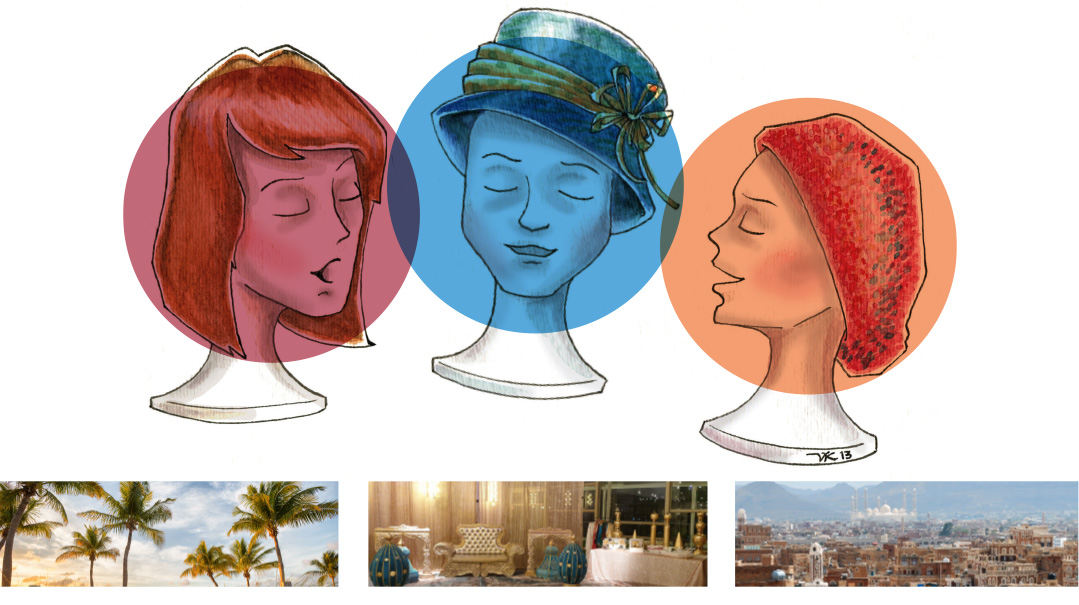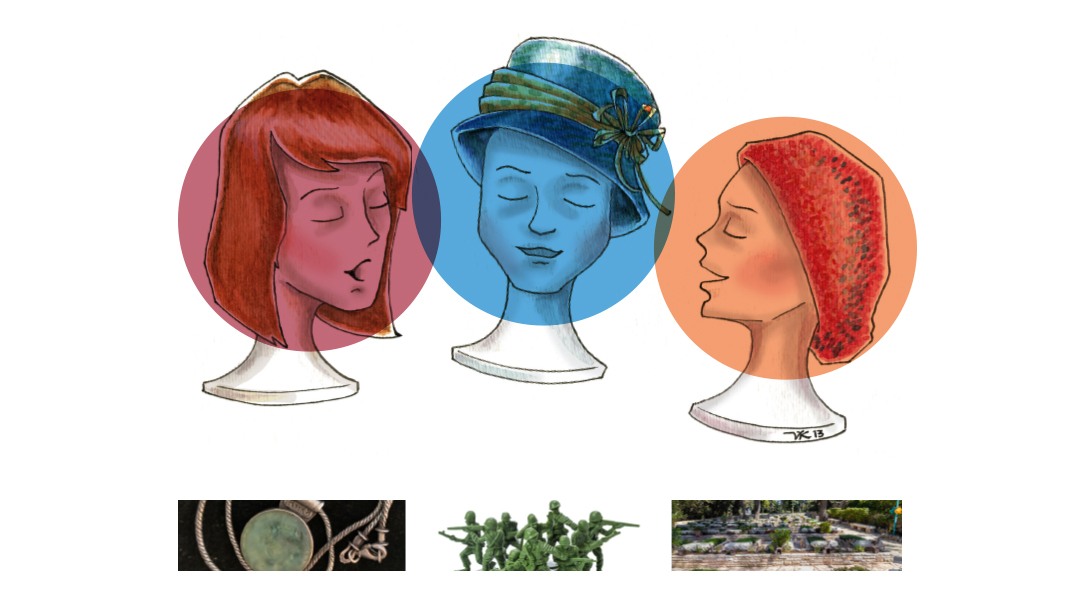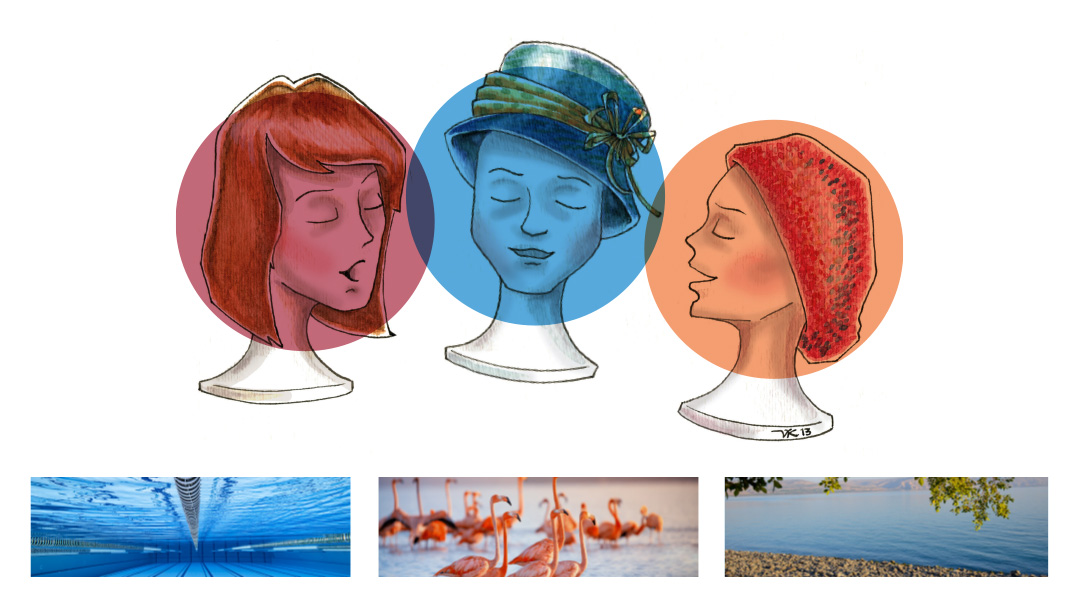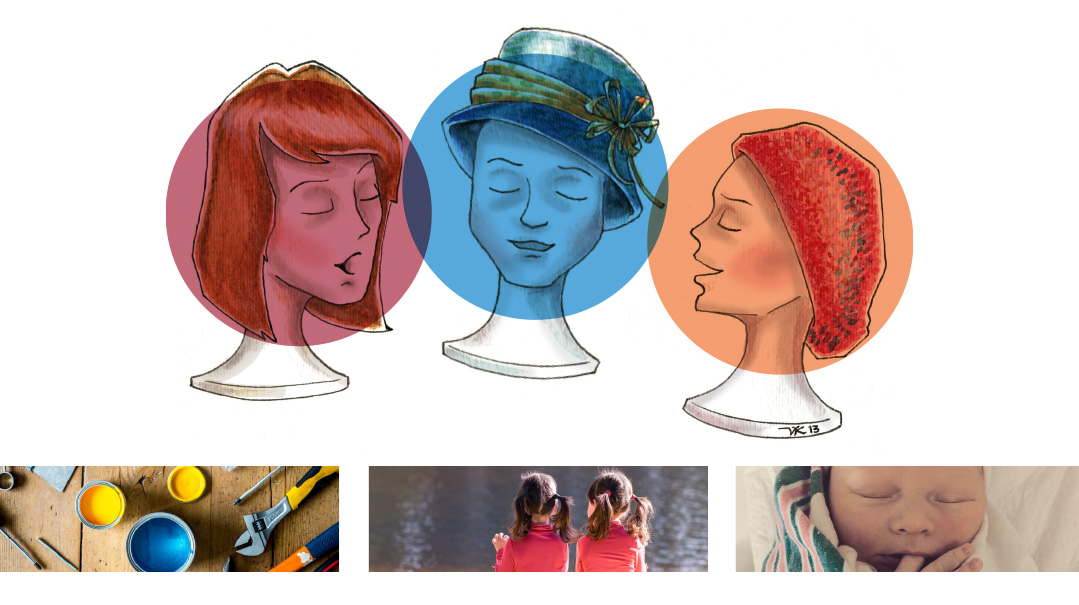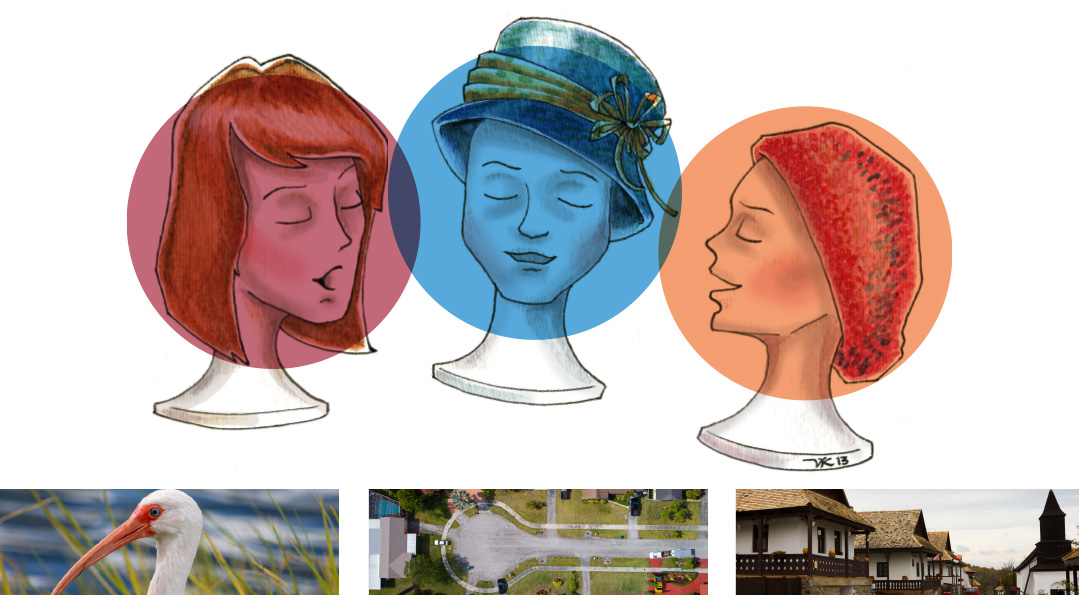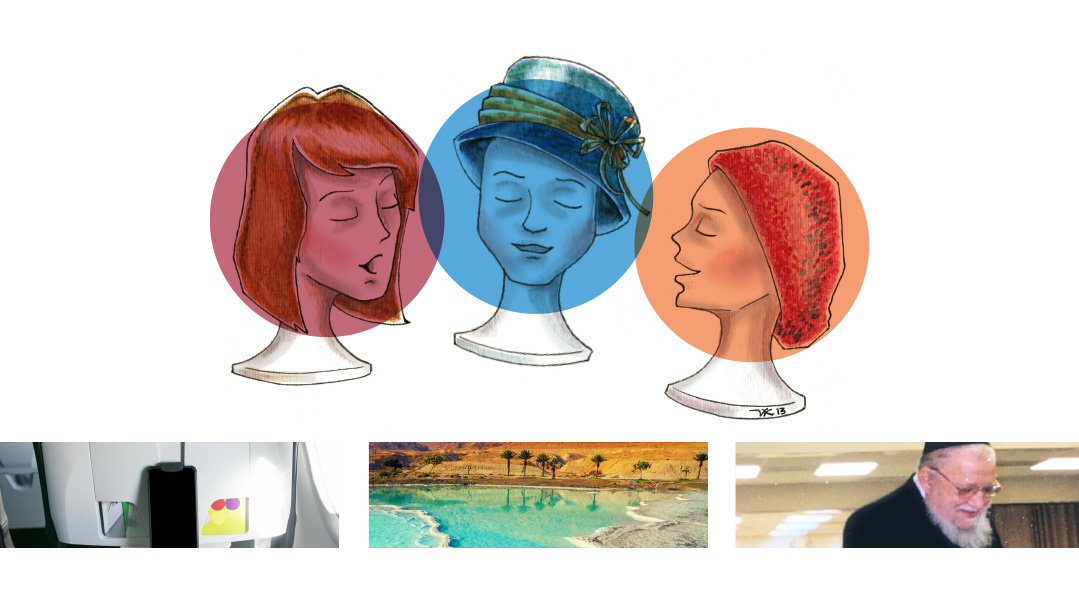Aha! Moments
| May 24, 2022When we Sisters decided to explore our own Aha! moments, we discovered something interesting
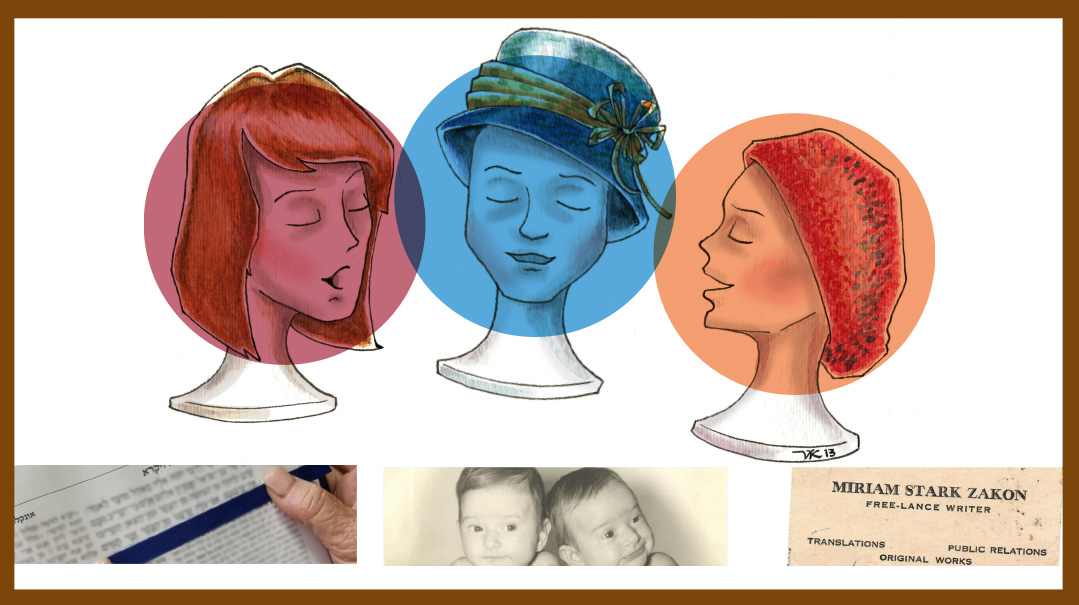
When the apple dropped off the tree onto Sir Isaac Newton’s head, did the scientist who “discovered” the law of gravity really shout, “Aha!”? More likely, if it happened at all, he first yelled “Ouch!”
And then there’s the story of Thomas Edison playing with some materials in his lab. Suddenly, the myth goes, Edison realized how to turn known theories of electrical currents into a practical source of light. In that “light-bulb moment,” he gave us… light bulbs.
Though historians question the truth behind these legends, we know that people do indeed have moments when they suddenly get a fresh idea, gain a new understanding, discover an as-yet-undiscovered truth.
When we Sisters decided to explore our own Aha! moments, we discovered something interesting. No, not a new scientific theory or invention. We found that our own Aha! moments revealed something about ourselves.
Join us as we learn how wandering thoughts can bring us closer to Hashem; how shared and separate identities are forged; and how an Aha! moment can help us break through our self-imposed limitations, even as it shows us the limits of… Aha! moments.
Marcia discovers…
Aha! I’m a Reader!
How did I travel from Florida… to Boro Park… to Munkatch… to the Midbar… and back to Florida? All in about 30 minutes?
It was Shabbos parshas Zachor, and the women’s section in the Florida shul was short on Chumashim, so I sat next to my friend Esther and looked on with her.
The Chumash had one of those blue bookmark ribbons attached to the spine. Esther, however, used it as a sort of pointer. Twisting it horizontally across the page, she lowered it line by line as the baal korei leined.
Maybe she was doing it for my benefit. But I had a feeling that she did so routinely — because as she moved the ribbon, she also murmured the words of the parshah along with the baal korei. I marveled at her intense kavanah, something I could only aspire to.
Stop watching Esther, I told myself. Do what she does. Follow along!
I attributed my distraction to what my kids call ADOS: Attention Deficit… Oooh, Shiny!
I redoubled my efforts and started to focus on the words. But this mental exertion suddenly triggered a memory.
I was back in the old Agudah on 18th Avenue in Boro Park. I must have been in third or fourth grade. I peeked at the Chumash open in front of the lady next to me and turned to the page she was on. I wasn’t really expecting to follow along — after all, the baal korei’s words had always sounded to me like a speeding train rumbling down the tracks.
But my eyes randomly fell on the word the baal korei was up to. Then, to my surprise, I realized… I was able to read the next word. And the next. And suddenly — Aha! — I was able to follow along! All those kriah exercises Morah Epstein made us do were finally paying off. And this was no kid-sized siddur with big letters and lots of white space. This was a real grown-up Chumash!
The flashback faded. I was back in the Florida shul sitting next to Esther.
No more trips down memory lane, I told myself firmly. No more distractions! Make this your adult Aha! moment. You CAN follow along with kavanah.
By then, we were somewhere around shlishi or revi’i in parshas Vayikra. I tried to immerse myself in the content. But… so many korbanos!
The mental image returned. Little Me. Big Chumash. I could almost recapture the excitement. Then, that feeling triggered another Aha! moment. Only this time, it wasn’t mine: it was our mother’s, Rose Stark a”h.
With her razor-sharp memory, she told of throwing a tantrum when she was about two. In mid-scream, she’d had a flash: Stop screaming, Raizie. You have words! Use them.
I’m like Mommy! I marveled. She found words to speak. I found words to read!
By now, we were at around chamishi. More korbanos. Another mental excursion. I tried to remember a shiur I’d recently heard. Something about how we can make korbanos relevant to our lives today.
But, for the life of me, I couldn’t remember the shiur’s upshot.
How is it I can remember Aha! moments that happened decades ago, but I can’t remember a shiur I heard just weeks ago? I guess it’s what they call a “senior moment.”
I admonished myself: First it’s “ADOS.” Then “triggers.” Then “flashbacks” and “Aha! moments.” And now “senior moments”? What cognitive processes will you explore next? Pay attention!
Alas, my mind refused to cooperate. Instead, it tried a mental exercise to make the parshah text more relevant: Pretend you’re in the Midbar. What kind of korban would you want to give?
A Todah? To show Hashem how grateful I am for all the brachos in my life?
A bakashah? Wait, there’s no such korban. That’s a type of tefillah. But isn’t tefillah our substitute for korbanos? So… what would I be asking of Hashem? The usual? Health, nachas, parnassah? No, wait — how about mental clarity?
Suddenly, all the cobwebs fell away. My mind cleared. And I stayed totally focused till the end of both Vayikra and Zachor. For those few moments, at least, I felt truly “karov” — close — to Hashem. My korban had been accepted.
Aha!
Emmy Leah discovers…
Aha! I’m an Individual!
In the pre-historic, pre-ultrasound days when our mother a”h was expecting my sister Miriam (Mimi) and me, she told the doctor she thought it was twins. He said no, just one big baby.
“Then why do I feel like two babies are jumping rope inside me?” she asked.
Our mother was always right. Mimi was born, and two minutes later, I emerged. The first words I heard on earth were the doctor saying, “Omigosh, there’s another one!”
And what about the jump rope? Well, I was born with the umbilical cord wrapped around my neck. Right again, Mommy….
Baruch Hashem, the rope untangled, and Mimi and I began our twin lives together. Conversation started early. Our mother told us that when we were just a few days old, sharing a crib, one of us said “hoo” to the other, who immediately answered, “hoo, hoo,” back.
Not exactly brilliant dialogue, but exciting nevertheless. Mommy called Daddy a”h at his butcher store, and he closed for the day to come listen to our first conversation. (For the record, we pretty much haven’t stopped talking since.)
And so it went, our first years. Yes, we were two separate babies, then two separate children, but we shared our experiences. We dressed alike, played dolls together, made up imaginary friends together, sat next to each other in school, finished each other’s sentences.
Until the day I tripped over a crack in a New York City sidewalk.
Two identical third graders walking home from school. Our mother waves from down the block. We rush to greet her — and then, boom! My foot gets caught in a big crack in the sidewalk, and I go hurtling down onto my left arm.
Some of my memories are blurry; others, incredibly vivid. Our mother had made our favorite lunch, salami sandwiches on Kaiser rolls with a pickle on the side and a glass of orange juice. Mimi kept urging me to eat, but it hurt too much, and I couldn’t — so she didn’t either.
My mother put a cold compress on my arm, and when she took it off, her face turned white. You could see the cracked bone through my skinny arm.
Off to the doctor. Mimi was crying so hard, the doctor thought she was the one with the broken arm. The doctor sent us to Maimonides Hospital Emergency Room.
Did I say us? No, not us. Just me (and Daddy). Off to my first all-by-myself-without-my-twin-sister-at-my-side experience. I was an individual, on my own.
Aha.
Oy vey.
Truth is, I don’t remember much about the X-rays and the cast, which reached from my fingers to above my elbow. Probably because of pain and shock — both from the broken bone and from dealing with an experience on my own.
I remember more clearly the aftermath of the accident, months later. We sued New York City for negligence. I recall nothing of the details of the lawsuit, but I clearly remember the most exciting part.
I was a passenger, in the back of a car.
A seasoned rider of buses and trains, I could count on the fingers of my (unbroken) hand the number of times I’d driven in a private car. Our lawyer drove Mommy and me somewhere (Court? Judge’s chambers?). The turn signal fascinated me: the ping-ping it made and the way it shut itself off when the turn was done. Amazing!
It gets better. We parked… under the ground! What today I know was an ordinary underground parking garage, then looked to me like a deep gold mine to explore, a cave peopled by magical creatures, a voyage to the center of the earth.
We settled the case, but more than the lump sum (pun intended) from the city, I got the knowledge that I could have experiences, real and imagined, separately from my sister. And yes, I could survive and even thrive without her sitting next to me. Aha!
At least, sort of aha. Because I also remember that as I experienced my separate-from-Mimi hospital and lawyer visits, I was taking notes in my head, trying to remember every detail to share with her.
Does she remember that? Not sure. I guess I’ll call now and ask her.
Hoo.
Hoo, hoo.
Miriam discovers…
Aha! I’m a Writer!
Where do dreams begin? For me, perhaps with Jo March, one of Louisa May Alcott’s little women, sitting in her attic, her “writing cap” on her head and an inkblot on her nose, scratching out books to help her impoverished family.
Or maybe it was Carolyne Keene, that unbelievably prolific writer of the Nancy Drew series that held me spellbound in third and fourth grades. (And if you think I’ve ever gotten over the terrible truth that Carolyne Keene didn’t exist, and Nancy was the product of one man’s imagination and more than a dozen ghostwriters, you understand very little about youthful hero worship…)
Where was I? Oh yes, my dream of becoming a famous writer. During the comics phase of my literary life, I was Lois Lane on the lookout for scoops before Clark Kent could grab them from me with an exclusive interview with Superman.
I wrote a poem in third grade with my collaborator Emmy Leah, which was published in our Bais Yaakov parents’ newsletter. Another poem appeared in my eighth-grade yearbook, and (gasp!) I reached journalistic heights as editor of Gesher, our high school newspaper. Clearly, I was ready for the big time, my acceptance speech for the Pulitzer written and ready to go.
Except… not.
Me, a writer? One of the Chosen Ones? Writers were people with fascinating backgrounds and lots of angst and suffering thrown in to give their literature more depth. Could Mimi Stark, of Boro Park, Brooklyn, and Bais Yaakov, whose greatest sorrow was losing color war, hang out with Shakespeare, Dostoevsky, and (of course) Carolyne Keene?
Dream on.
We were newlyweds, off to Eretz Yisrael in the early 1980s. We were packing necessities like a plastic pasta maker (which we never used; Israel, even then, could boast of Osem noodles) and cans of Starkist tuna.
And then Husband gave me a gift: A 2″ x 3″ beige business card.
It bore a name — mine! — in fancy capital letters. (I’d never heard of the word “font.”) And then, remarkably, surprisingly, amazingly, it announced my profession to the world: FREE-LANCE WRITER. It even gave specifics of my career: TRANSLATIONS, PUBLIC RELATIONS, ORIGINAL WORKS.
If you can assign a genre to a business card, I must admit this was a work of fiction. I’d never translated more than a homework assignment for our Ivrit teacher. Public relations? Well, I used to say thank you to bus drivers, and Emmy Leah and I would wave cheerfully to the Italian shoemaker whose shop we passed on our way to school. As for original works? Well, there was that third-grade poem….
But equipped with a Hermès manual typewriter and business cards that told the world — and me — that I was a writer, it was time to begin my career.
I’m looking fondly at that small, slightly crumpled card that I keep with a few other precious possessions. The confidence it instilled in me, the change in my self-perception, baruch Hashem, launched a career in frum publishing that took me way further than my high school dreams (except for the Pulitzer; still waiting on that).
But did it really?
Far beyond my business card, there was the magazine publisher who accepted my first few articles. The children’s book publisher who took a chance on me and let me write my first “series” book. The editor of an organization’s newsletter who taught me so much about PR. The graphic artist who started sending clients my way (and introduced me to the mysteries of fonts). The master translator (Rabbi Aryeh Kaplan ztz”l, if you’re interested) who gave me such good advice that three decades later I still share it with novice writers.
More: There was HaKadosh Baruch Hu, gifting me with writing skills and a love for reading, opening doors for me that I didn’t even know existed, putting me into an industry that was just leaving infancy and was ripe with opportunity.
So there you have it — another Aha! moment: the realization that while Aha! moments are gratifying and important, it’s the effort we put in, the people who help along the way, and, of course, the siyata d’Shmaya that tells the full story.
Aha!
(Originally featured in Family First, Issue 794)
Oops! We could not locate your form.

